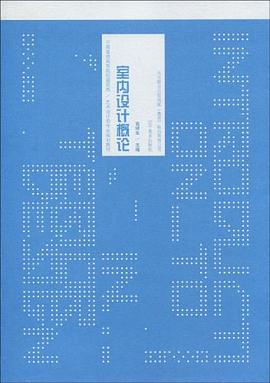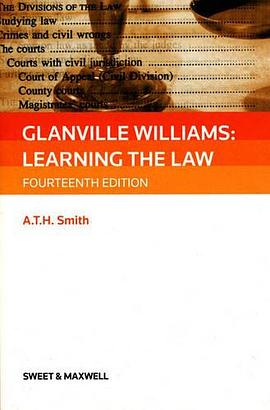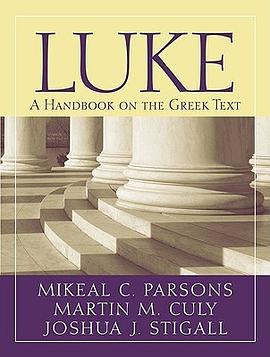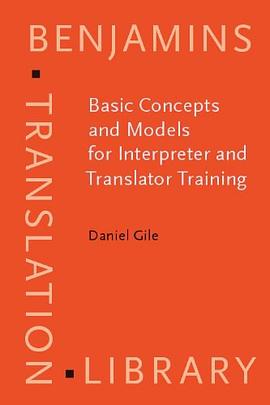
Simultaneous Interpretation pdf epub mobi txt 电子书 下载 2025
出版者:John Benjamins Publishing Co
作者:Robin Setton
出品人:
页数:0
译者:
出版时间:1999-04
价格:USD 195.00
装帧:Hardcover
isbn号码:9781556197123
丛书系列:Benjamins Translation Library
图书标签:
- 翻译
- 口译理论
- 非文学
- 英国
- 翻译学
- 心理认知
- 口译研究
- E
- 口译
- 同声传译
- 翻译理论
- 语言学
- 交际语言学
- 翻译技巧
- 会议翻译
- 实时翻译
- 跨文化交流
- 语言服务
下载链接在页面底部

具体描述
作者简介
目录信息
Abbreviations and symbols ix
Preface and acknowledgments xi
Chapter 1 Introduction 1
1 Simultaneous conference interpretation 1
2 The cognitive-pragmatic approach 4
3 The theoretical framework 6
3.1 Relevance theory 7
3.2 Cognitive semantics 12
3.3 Mental models 15
3.4 Speech-act theory 17
4 The phenomenology of discourse 20
5 Outline and scope of the study 21
Chapter 2 SI Research 25
1 Historical background 25
2 Temporal and surface variables 26
2.1 Measuring synchronicity 27
2.2 Ear-voice span (EVS) or 'lag' 28
2.3 Segmentation and processing units 28
2.4 Speech rates 30
2.5 Error analysis 31
3 A computational linguistics approach 31
4 Information-processing models of SI 34
5 The Effort Model: a processing capacity account 35
6 The Interpretive Theory of translation (IT) (théorie du sens) 38
7 SI in Allgemeine Translationstheorie (ATT) 43
8 SI research: evaluation and prospects 45
8.1 Methodology in SI research 45
8.2 Outstanding issues and controversies 48
8.2.1 Intermediate representation 48
8.2.2 SI skills and strategies 49
8.2.3 Language-specific factors 53
9 Old and new concepts in T & I research 57
Chapter 3 An Outline Model for SI 63
1 Introduction 63
2 Sources for the model 64
3 Basic assumptions about cognitive function 68
3.1 The representational hypothesis 68
3.2 The Modularity Hypothesis (MH) 69
4 Inputs to discourse comprehension 71
4.1 Audiovisual input 71
4.2 Speech processing in psycholinguistics 74
4.3 Word recognition 75
4.4 The (multilingual) lexicon 76
5 Assembly: syntax, lexicon and context 77
6 The mental model 85
7 Contextualisation for SI 87
8 The language of representation 89
9 The Executive 90
10 Speech production in SI 92
11 Processing capacity and coordination 97
Chapter 4 Research Issues, Corpus, and Methodology 99
1 Research issues 101
2 The Corpus 103
2.1 German-English: 'Würzburg' 105
2.2 Chinese-English: 'Taipei' 107
2.3 Supplementary Chinese-English corpus 109
2.4 Comparison of SI corpora 110
2.5 Equipment, recording, timing and transcription 111
2.6 Segmentation of the transcripts for analysis 112
2.7 Linguistic descriptions 113
2.8 English gloss 119
3 Methodology 119
Chapter 5 Structures and Strategies 123
1 Introduction to the corpus analysis 126
2 SL-TL asymmetry in SI: obstacle or epiphenomenon? 128
3 Word order 129
4 Word-order asymmetry and indeterminacy 131
4.1 German-English 133
4.1.1 Autonomous syntax 134
4.1.2 German-English SI structural patterns: summary 142
4.2 Chinese-English 142
4.2.1 Parsing Chinese 145
4.2.2 Left-branching structures in Chinese-English SI 145
4.2.3 Subjects 155
4.2.4 Asymmetries and moot constituency in Chinese-English SI 158
4.3 Left-branching noun phrases 158
5 SL-TL compatible structures: paraphrase and re-ordering 160
6 Simplification of semantic structure 164
7 Marked subordinate and non-declarative structures 165
8 Discussion 167
Chapter 6 The Pragmatics of Interpretation 173
1 Contexts 174
2 'Frame' effects 174
3 Situation and scripts 175
4 Inference 179
5 Inferred referential features 180
5.1 Boundedness and set-membership 180
5.2 Anaphora and deixis 181
5.3 Tense, aspect and realis/irrealis 182
6 SI strategies or natural inference products? 186
6.1 Anticipation 187
6.1.1 Anticipation from a propositional attitude 188
6.1.2 Anticipation from pragmatic principles 188
6.1.3 Long-range deductive anticipation 189
7 Contextual sources: summary 191
8 The discourse model: entities, properties and relations (epr) 192
9 Secondary pragmatic processing and communicative intent 197
10 Processing instructions and procedural encoding 201
10.1 Modals and connectives: contrastive differences 204
10.2 German-English 208
10.3 Chinese-English 211
11 A vocabulary of representation (and presentation) 212
12 Microanalysis 217
Chapter 7 Judgment, Compensation and Coordination 225
1 Introduction 225
2 Judgment 226
3 Late elements and afterthoughts 231
4 Compensation 235
5 Pragmatic fidelity 241
6 Coordination and attention in SI 244
6.1 Hesitancy and delivery patterns 245
7 Executive and secondary pragmatic processing 248
7.1 Cognitive management and difficulty in SI 249
8 Failure in SI 252
8.1 Problems in primary assembly 253
9 Processing breakdown and compound errors 255
9.1 Failure in SI from recited written text 256
9.2 Pragmatic failure 259
9.3 Causes of failure in SI 263
10 Summary 264
Chapter 8 Summary and Conclusions 267
Appendices 285
Appendix A: Parsing theory 287
Appendix B: Sample of conference discourse unsuited to analysis 290
German-English corpus: Würzburg'
Appendix Wl: SI in live conference, interpreter WL (analytic) 292
Appendix W2: SI in live conference, interpreter WL (interlinear) 300
Appendix W3: SI in mock session, interpreters WA, WB (analytic) 305
Appendix W4: Interpreters' versions (WL, WA, WB) as fluent text 315
Chinese-English corpus: 'Taipei'
Appendix Tl: Chinese source discourse (Hanzi transcript) 318
Appendix T2-A: Sl-10, interpreters TA, TB (romanised, gloss; analytic) 322
Appendix T2-B: SI 1-28, interpreters TA, TB (romanised, gloss; synchronised) 329
Appendix T3: S29-39 (recited input), interpreters TA, TB (interlinear) 335
Notes to chapters 343
Glossary 355
References 373
Name index 385
Subject index 388
· · · · · · (收起)
Preface and acknowledgments xi
Chapter 1 Introduction 1
1 Simultaneous conference interpretation 1
2 The cognitive-pragmatic approach 4
3 The theoretical framework 6
3.1 Relevance theory 7
3.2 Cognitive semantics 12
3.3 Mental models 15
3.4 Speech-act theory 17
4 The phenomenology of discourse 20
5 Outline and scope of the study 21
Chapter 2 SI Research 25
1 Historical background 25
2 Temporal and surface variables 26
2.1 Measuring synchronicity 27
2.2 Ear-voice span (EVS) or 'lag' 28
2.3 Segmentation and processing units 28
2.4 Speech rates 30
2.5 Error analysis 31
3 A computational linguistics approach 31
4 Information-processing models of SI 34
5 The Effort Model: a processing capacity account 35
6 The Interpretive Theory of translation (IT) (théorie du sens) 38
7 SI in Allgemeine Translationstheorie (ATT) 43
8 SI research: evaluation and prospects 45
8.1 Methodology in SI research 45
8.2 Outstanding issues and controversies 48
8.2.1 Intermediate representation 48
8.2.2 SI skills and strategies 49
8.2.3 Language-specific factors 53
9 Old and new concepts in T & I research 57
Chapter 3 An Outline Model for SI 63
1 Introduction 63
2 Sources for the model 64
3 Basic assumptions about cognitive function 68
3.1 The representational hypothesis 68
3.2 The Modularity Hypothesis (MH) 69
4 Inputs to discourse comprehension 71
4.1 Audiovisual input 71
4.2 Speech processing in psycholinguistics 74
4.3 Word recognition 75
4.4 The (multilingual) lexicon 76
5 Assembly: syntax, lexicon and context 77
6 The mental model 85
7 Contextualisation for SI 87
8 The language of representation 89
9 The Executive 90
10 Speech production in SI 92
11 Processing capacity and coordination 97
Chapter 4 Research Issues, Corpus, and Methodology 99
1 Research issues 101
2 The Corpus 103
2.1 German-English: 'Würzburg' 105
2.2 Chinese-English: 'Taipei' 107
2.3 Supplementary Chinese-English corpus 109
2.4 Comparison of SI corpora 110
2.5 Equipment, recording, timing and transcription 111
2.6 Segmentation of the transcripts for analysis 112
2.7 Linguistic descriptions 113
2.8 English gloss 119
3 Methodology 119
Chapter 5 Structures and Strategies 123
1 Introduction to the corpus analysis 126
2 SL-TL asymmetry in SI: obstacle or epiphenomenon? 128
3 Word order 129
4 Word-order asymmetry and indeterminacy 131
4.1 German-English 133
4.1.1 Autonomous syntax 134
4.1.2 German-English SI structural patterns: summary 142
4.2 Chinese-English 142
4.2.1 Parsing Chinese 145
4.2.2 Left-branching structures in Chinese-English SI 145
4.2.3 Subjects 155
4.2.4 Asymmetries and moot constituency in Chinese-English SI 158
4.3 Left-branching noun phrases 158
5 SL-TL compatible structures: paraphrase and re-ordering 160
6 Simplification of semantic structure 164
7 Marked subordinate and non-declarative structures 165
8 Discussion 167
Chapter 6 The Pragmatics of Interpretation 173
1 Contexts 174
2 'Frame' effects 174
3 Situation and scripts 175
4 Inference 179
5 Inferred referential features 180
5.1 Boundedness and set-membership 180
5.2 Anaphora and deixis 181
5.3 Tense, aspect and realis/irrealis 182
6 SI strategies or natural inference products? 186
6.1 Anticipation 187
6.1.1 Anticipation from a propositional attitude 188
6.1.2 Anticipation from pragmatic principles 188
6.1.3 Long-range deductive anticipation 189
7 Contextual sources: summary 191
8 The discourse model: entities, properties and relations (epr) 192
9 Secondary pragmatic processing and communicative intent 197
10 Processing instructions and procedural encoding 201
10.1 Modals and connectives: contrastive differences 204
10.2 German-English 208
10.3 Chinese-English 211
11 A vocabulary of representation (and presentation) 212
12 Microanalysis 217
Chapter 7 Judgment, Compensation and Coordination 225
1 Introduction 225
2 Judgment 226
3 Late elements and afterthoughts 231
4 Compensation 235
5 Pragmatic fidelity 241
6 Coordination and attention in SI 244
6.1 Hesitancy and delivery patterns 245
7 Executive and secondary pragmatic processing 248
7.1 Cognitive management and difficulty in SI 249
8 Failure in SI 252
8.1 Problems in primary assembly 253
9 Processing breakdown and compound errors 255
9.1 Failure in SI from recited written text 256
9.2 Pragmatic failure 259
9.3 Causes of failure in SI 263
10 Summary 264
Chapter 8 Summary and Conclusions 267
Appendices 285
Appendix A: Parsing theory 287
Appendix B: Sample of conference discourse unsuited to analysis 290
German-English corpus: Würzburg'
Appendix Wl: SI in live conference, interpreter WL (analytic) 292
Appendix W2: SI in live conference, interpreter WL (interlinear) 300
Appendix W3: SI in mock session, interpreters WA, WB (analytic) 305
Appendix W4: Interpreters' versions (WL, WA, WB) as fluent text 315
Chinese-English corpus: 'Taipei'
Appendix Tl: Chinese source discourse (Hanzi transcript) 318
Appendix T2-A: Sl-10, interpreters TA, TB (romanised, gloss; analytic) 322
Appendix T2-B: SI 1-28, interpreters TA, TB (romanised, gloss; synchronised) 329
Appendix T3: S29-39 (recited input), interpreters TA, TB (interlinear) 335
Notes to chapters 343
Glossary 355
References 373
Name index 385
Subject index 388
· · · · · · (收起)
读后感
评分
评分
评分
评分
评分
用户评价
评分
评分
评分
评分
评分
相关图书
本站所有内容均为互联网搜索引擎提供的公开搜索信息,本站不存储任何数据与内容,任何内容与数据均与本站无关,如有需要请联系相关搜索引擎包括但不限于百度,google,bing,sogou 等
© 2025 book.wenda123.org All Rights Reserved. 图书目录大全 版权所有




















